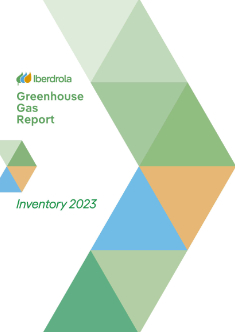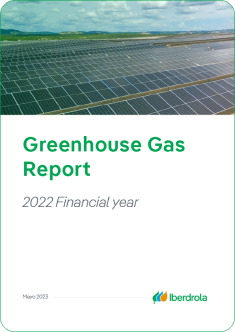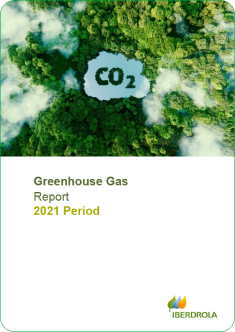Greenhouse gas (GHG) report
Greenhouse Gas Report (Carbon Footprint)
Since 2008, Iberdrola has calculated its carbon footprint by means of a greenhouse gas inventory.
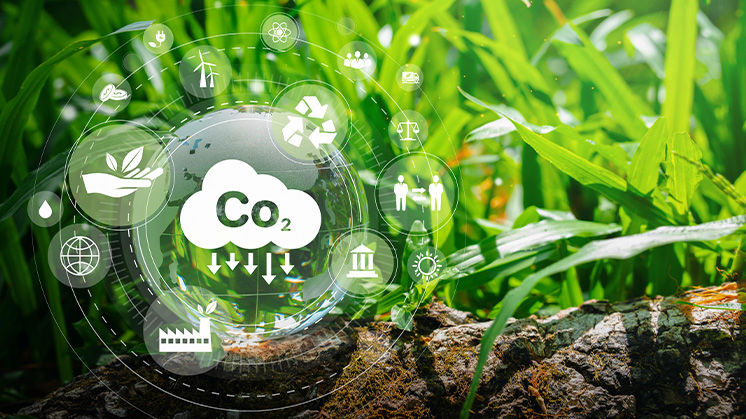
The carbon footprint represents the total volume of greenhouse gases (GG) resulting from everyday economic and human activity. Knowing the carbon footprint of an activity, which is measured in tons of CO2eq emissions, is important when it comes to taking measures and launching initiatives to reduce it to the lowest possible level. It all starts with what each individual does every day.
In Iberdrola, the emissions accounting is based on international standards, such as the GHG (Protocol Corporate Accounting and Reporting Standard) and ISO 14064-1: 2018.
 Direct emissions
Direct emissions
Direct emissions from sources owned or controlled by the company and includes:
- Stationary combustion emissions:
- CO2 emissions from electric power generation facilities associated with the combustion of any type of fuels.
- Methane (CH4) and nitrous oxide (N2O) emissions associated with the combustion of any type of fuel.
- CO2 emissions from the combustion of fuels in buildings or facilities, from heating equipment or generators.
- CO2 emissions from the combustion of fuels in gas storage facilities. - Direct fugitive emissions in anthropogenic systems:
- Of methane (CH4) (natural gas storage and transport).
- Of sulphur hexafluoride (SF6).
- From refrigerant gases (CFC’s) from air-conditioning equipment.
- Emissions from mobile combustion, associated with fuel consumption in transport equipment (fleet vehicles and vessels to transport personnel).
- Emissions from land use: associated with the change in land use, calculated by the volume of vegetation generated.
 Indirect emissions
Indirect emissions
These emissions are a consequence of the organization’s activities, but which are generated in sources that are owned or controlled by the organization. This includes:
- Indirect emissions due to imported energy.
Indirect emissions are those from electricity, heat or steam consumed by the organization and provided by third parties. Other indirect emissions associated with electricity generation are also included in this section:
- Associated with electricity consumption during outages at power plants.
- Associated with the consumption of electricity by pumps at hydroelectric power stations.
- Associated with electricity consumption in the group’s buildings.
- Associated with losses in the electricity transmission or distribution networks. - Indirect emissions due to transport.
Emissions from sources located outside the limits of the organization. These are mobile sources and their emissions are due mainly to fuel burned in transport equipment:
- Associated with employee business travel.
- Associated with the transport of employees from their residence to their place of work.
- Associated with Well To Tank (WTT) emissions of the fuels consumed in electricity generation. - Indirect emissions caused by products used by the organization.
Emissions from sources outside the limits of the organization associated with all goods purchased by the organization:
- Emissions associated with the supply chain. - Indirect emissions associated with the use of the organization’s products.
Emissions associated with the use of the organization’s products that come from energy products traded by the organization:
- Associated with electricity purchased for sale to end customers.
- Associated with gas supplied to customers.
- Emissions associated with power generated for third parties
Interactive GHG Inventory
Here you can consult the main environmental indicators in the digital greenhouse gases inventory for the Iberdrola group by selecting the country, technology or year you wish to see the data for. For more complete information, download our GHG report in pdf format below.
Greenhouse gas emissions report 2024
Since 2010 we have been preparing our annual Greenhouse Gas (GHG) Report, thus continuously consolidating our commitment to transparency and defence of a sustainable and environmentally friendly growth model. Once again this year, we present our Greenhouse Gas Report, which includes information on the company's emissions during the 2024 financial year.
Previous greenhouse gas emission reports
Iberdrola's inventory of greenhouse gas emissions is published annually, and documents from previous years are publicly available.
AENOR certification
Since 2008, Iberdrola has verified its greenhouse gas emissions inventory with AENOR, in accordance with the ISO 14064-1:2018 standard, including direct and indirect emissions from all its activities.
Certification from the National Carbon Footprint Registry
Iberdrola is registered in the National Registry for Carbon Footprints and Compensation and Carbon Dioxide Absorption Projects of the Spanish Ministry for Ecological Transition and Demographic Challenge in the CALCULATION and REDUCTION categories. This seal was created with a double purpose: on the one hand, it makes it easier for organisations to prove their participation in the registry, and on the other hand, it reflects the degree of effort undertaken by such organisations in the fight against climate change.
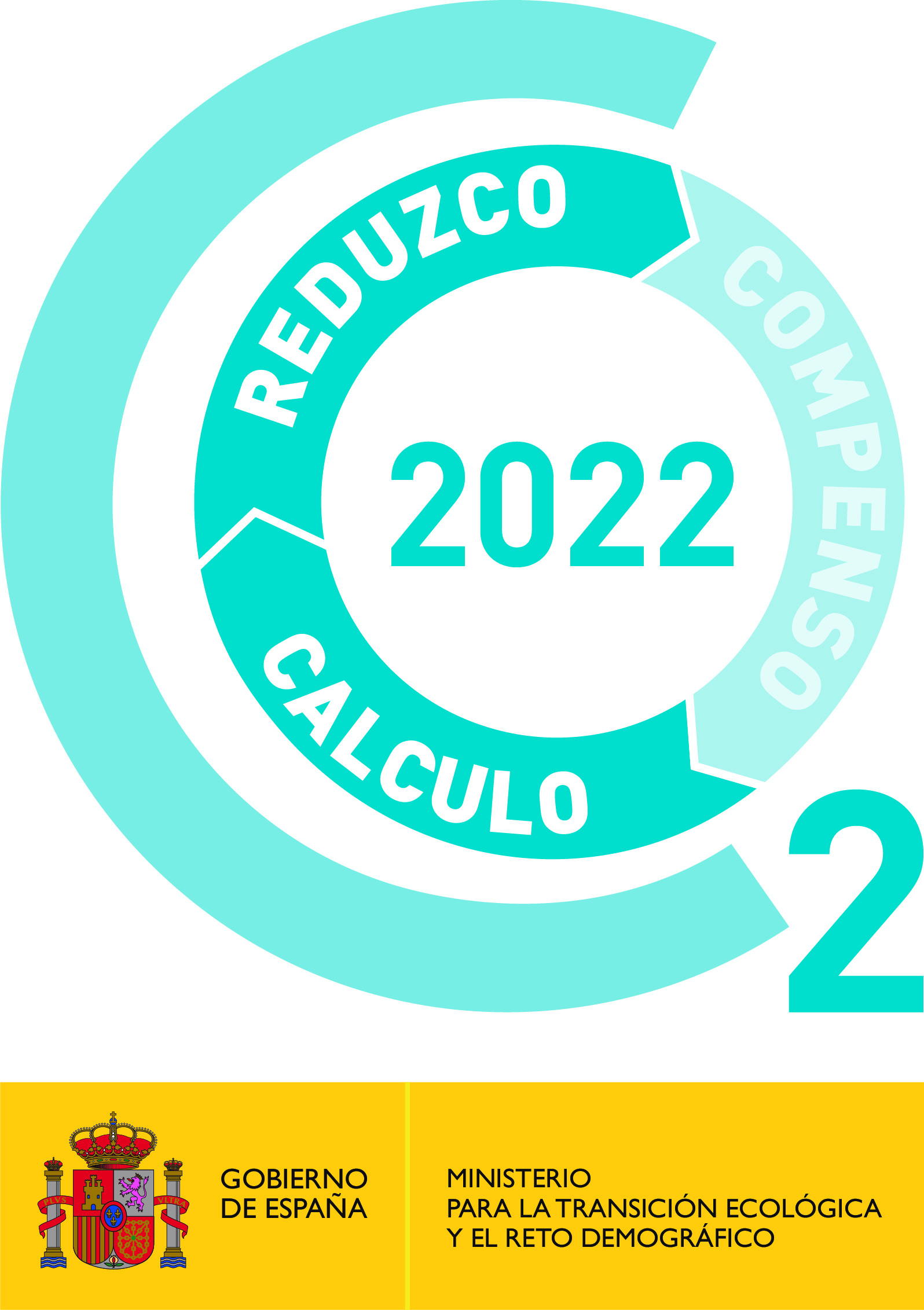
Almost 3,800 organisations have been included in this registry since its inception. Since 2012, Iberdrola has registered its carbon footprint annually, being the first utility to do so, thus demonstrating its commitment and leadership in the fight against climate change and achieving goal 13 of the Sustainable Development Goals.
Golden Seal for its transparency in the Greenhouse Inventory
Neoenergia**, Iberdrola's Brazilian subsidiary, has received the Golden Seal for transparency in preparing its Greenhouse Gas Inventory, where it identifies the necessary opportunities and strategies to achieve the goal of neutralising carbon emissions by 2050. The study was carried out following the Brazilian GEI Protocol Programme, which encompasses the energy produced by Neoenergia with renewable sources (wind and hydroelectric) and deregulated fossil fuel generation (thermal), as well as electricity transport and distribution through its grid system.
(*)In its emissions inventory, Iberdrola has incorporated the emissions from the plants it operates in Mexico under Scope 3 emissions as Independent Energy Producer (IEP). It has done this on the understanding that Iberdrola does not have operational control over these plants, since it is the CFE that is responsible for making decisions on the dispatch and entry into operation, or not, of these plants.
(**)Neoenergia, S.A. is 83.8% indirectly owned by Iberdrola, S.A.

Carbon footprint
What is the carbon footprint and why will reducing it help to combat climate change?

Intensity emissions
CO₂ emissions, among the lowest generated by utilities.

Policy on Nature
Respect for the environment is key to our sustainable energy model
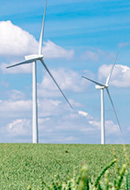
Carbon neutrality
What is it and why is it vital for the future of the planet?





